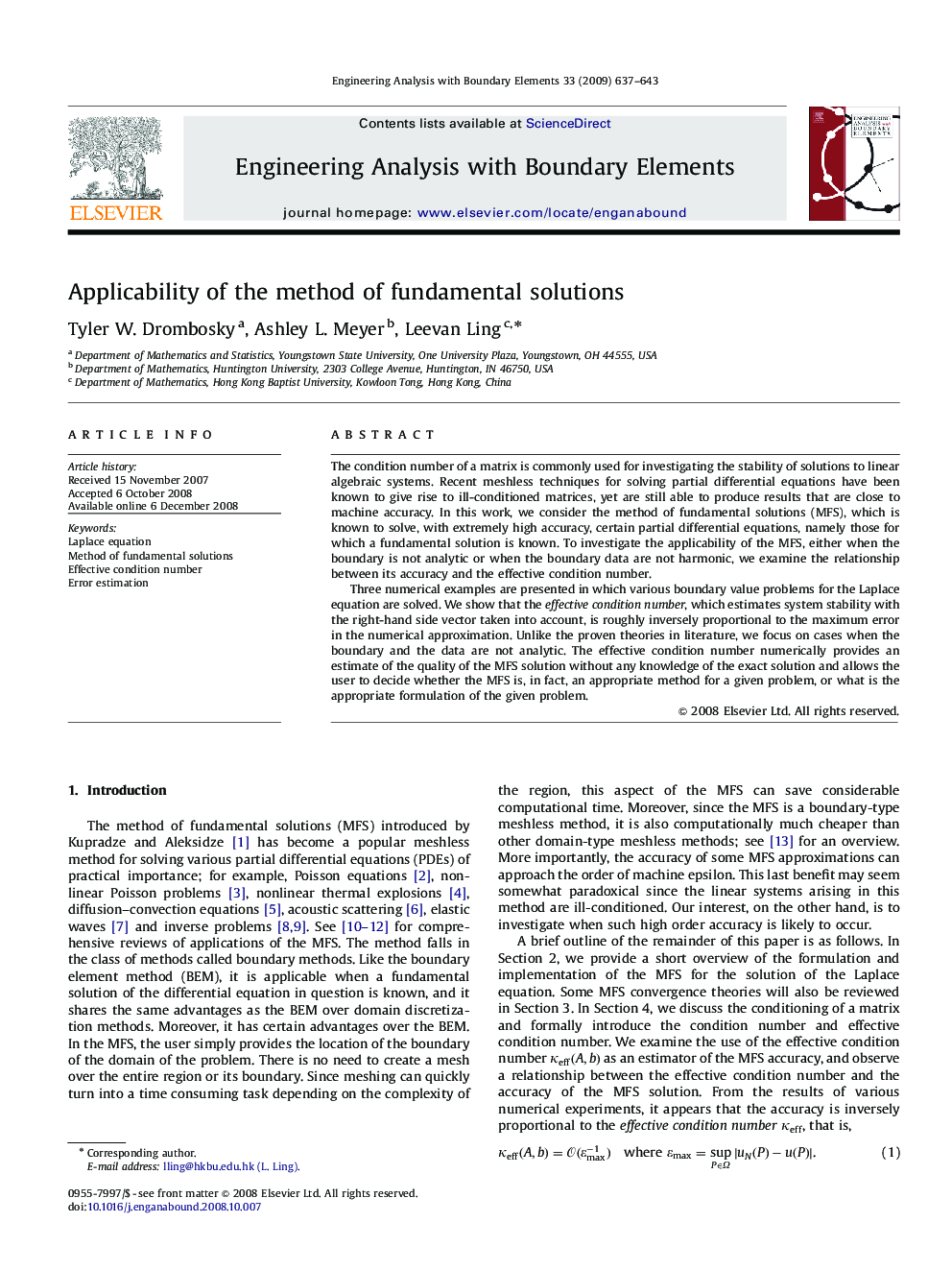| Article ID | Journal | Published Year | Pages | File Type |
|---|---|---|---|---|
| 513150 | Engineering Analysis with Boundary Elements | 2009 | 7 Pages |
The condition number of a matrix is commonly used for investigating the stability of solutions to linear algebraic systems. Recent meshless techniques for solving partial differential equations have been known to give rise to ill-conditioned matrices, yet are still able to produce results that are close to machine accuracy. In this work, we consider the method of fundamental solutions (MFS), which is known to solve, with extremely high accuracy, certain partial differential equations, namely those for which a fundamental solution is known. To investigate the applicability of the MFS, either when the boundary is not analytic or when the boundary data are not harmonic, we examine the relationship between its accuracy and the effective condition number.Three numerical examples are presented in which various boundary value problems for the Laplace equation are solved. We show that the effective condition number, which estimates system stability with the right-hand side vector taken into account, is roughly inversely proportional to the maximum error in the numerical approximation. Unlike the proven theories in literature, we focus on cases when the boundary and the data are not analytic. The effective condition number numerically provides an estimate of the quality of the MFS solution without any knowledge of the exact solution and allows the user to decide whether the MFS is, in fact, an appropriate method for a given problem, or what is the appropriate formulation of the given problem.
